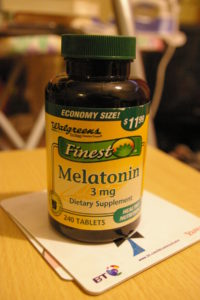
Sleep disturbances are a common complication associated with autism spectrum disorder (ASD). A new clinical practice guideline has now been published by the American Academy of Neurology to provide strategies for addressing sleep disturbances in children and adolescents with the disorder. The guideline was developed based on a review of relevant studies that were published before 2018.
After looking at the data, the experts recommended that healthcare providers and hospital physicians, should evaluate children and adolescents with ASD for factors that could cause sleep disturbances such as medications and coexisting conditions and should counsel parents on how to improve sleep habits through behavioral interventions. According to the authors of the guideline, behavioral strategies should be a first-line approach for treating sleep disturbances in those with ASD.
The guideline also suggests that a pharmaceutical grade melatonin could be offered to these ASD patients, beginning at a low dose, if behavioral interventions prove ineffective. In the case that children or adolescents are provided with melatonin, the experts recommend that parents should be counseled on potential side effects and educated on the fact that long-term safety data associated with the use of melatonin are lacking. It is important that anyone using melatonin or providing it to their children understand that we do not fully understand how melatonin impacts us in the long-term and how safe its regular use is.
The experts also highlight that clinicians should counsel patients and parents on the lack of data to support the use of mattress technologies and weighted blankets that have been developed and marketed for those suffering from sleep disturbances. However, the experts also note that clinicians can counsel that there do not appear to be any serious adverse side effects associated with these technologies and so using these technologies as a non-pharmacological intervention may be worth trying for certain patients.
That this new guideline was developed and published speaks to the growing recognition for the need for effective interventions for sleep disturbances in those with ASD. Indeed, researchers have estimated that between 40% and 80% of children with ASD struggle with sleep, with the biggest specific problem being difficulty falling asleep. More research is needed to help us determine the safest and most effective ways to intervene to improve sleep in children and adolescents with ASD.
